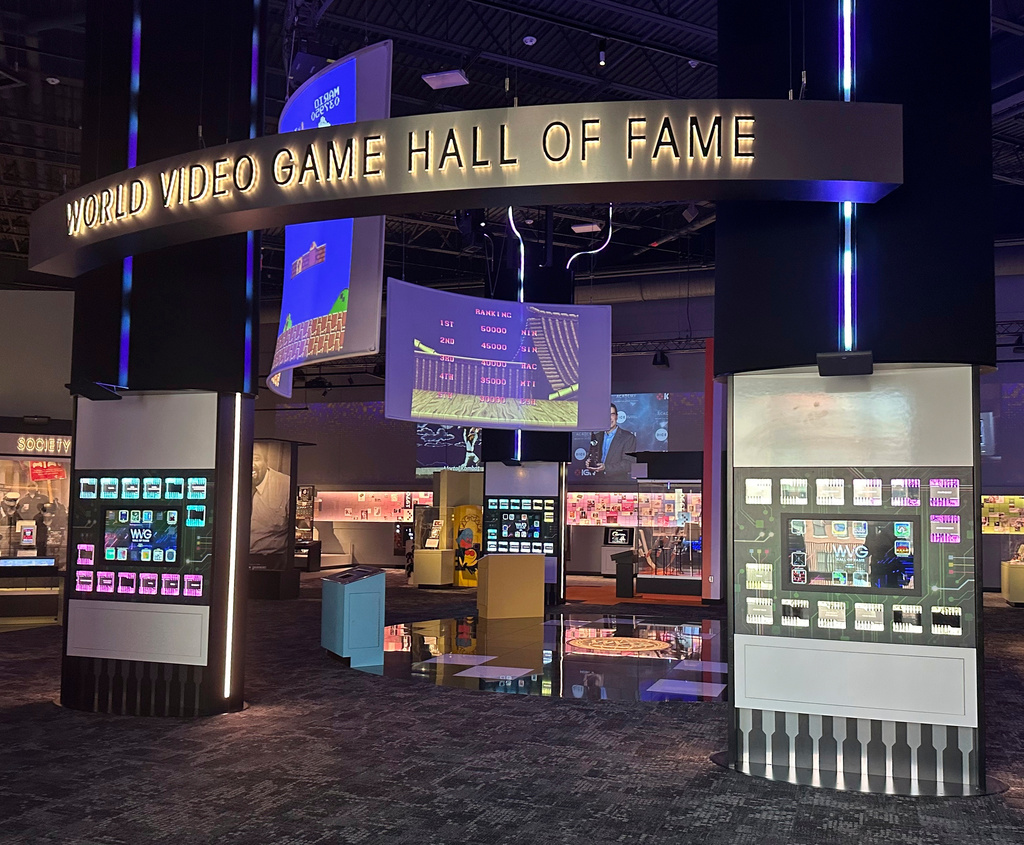ROCHESTER, N.Y. (AP) — On Thursday, the World Video Game Hall of Fame welcomed four new members, honoring titles that pushed player boundaries and transformed the gaming sector.
Making up the Class of 2025 are: Defender, the 1981 arcade game that raised the bar on difficulty;
Tamagotchi
The digital pets that connected physical toys with video games; GoldenEye 007, whose four-player mode set the stage for subsequent multiplayer titles; and Quake, released in 1996 with a groundbreaking 3D engine that established itself as the new benchmark for the industry.

The winners emerged from a field of
12 finalists
This list includes games like Age of Empires, Angry Birds, Call of Duty 4: Modern Warfare, Frogger, Golden Tee, Harvest Moon, Mattel Football, and NBA 2K.
Each year, the Hall of Fame honors arcade, console, computer, handheld, and mobile games that have demonstrated enduring appeal and significantly impacted either the video game sector or broader popular culture.
Lindsey Kurano, an electronic games curator, noted that Id Software’s 1996 release of Quake has had a significant enduring impact. Its game code is described as “a literal legacy” and remains utilized in certain titles even three decades later.
John Romero, one of Quake’s creators, who was present at the ceremony honoring his game, mentioned that he and the team dedicated an unusually extensive period—18 months—to developing the title, spending much of their time immersed in continuous playtesting.
He mentioned that they understood incorporating a programming language within the game would enhance the experience for players familiar with their earlier release, Doom, making them even more pleased,
remarks aired
on RochesterFirst.com.
“We’re genuinely thrilled with the influence that Quake had on the world,” he stated.
The top-selling Defender, launched by Williams Electronics, demonstrated that gamers were ready for intricate and demanding experiences in arcades, according to industry professionals. This game merged fast-paced action with a sophisticated control setup within a horizontally-scrolling shoot-’em-up format.
“Defender’s intense gameplay elevated the competitive atmosphere in arcades and was one of the initial titles to distinctly differentiate serious gamers from those who played less frequently,” stated Jeremy Saucier, assistant vice president for interpretation and electronic games.
The introduction of Tamagotchi in 1996 played a significant role in boosting the appeal of pet simulation video games. This portable, egg-shaped gadget enabled players to nurture a digital creature throughout its life cycle—from hatching to passing away—by performing tasks like feeding, entertaining, and maintaining cleanliness via button presses. According to collections manager Kristy Hisert, Tamagotchi stood out compared to other prevalent video gaming devices at that time due to its distinctive approach.
“She mentioned that it gave players a sense of connection, care, and personalization—a break from competitive and combat-focused gaming,” he stated. Games like Neopets, Nintendogs, along with various social media and mobile pet simulation titles, soon followed suit.
GoldenEye 007 was based on the 1995 James Bond spy film “GoldenEye” and was the third best-selling game for the Nintendo 64, behind Super Mario 64 and Mario Kart 64. The result of a 1997 partnership between Nintendo and Rare, the first-person shooter game was known for its four-person multiplayer mode, which Hall of Fame experts said influenced many multiplayer games that followed.
The World Video Game Hall of Fame is inside The Strong National Museum of Play. Anyone can nominate a video game for consideration. Museum staff name 12 finalists each year and solicit votes from experts and fans before announcing the winners.